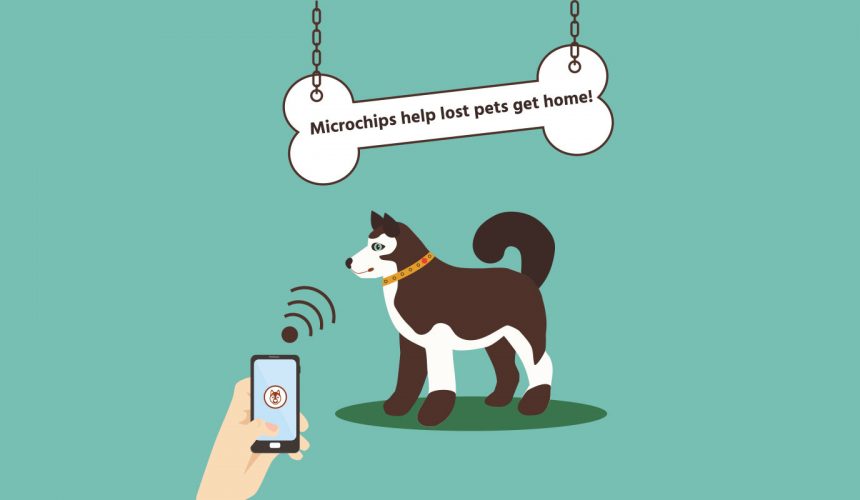What is heartworm in dogs and cats?
Heartworms, or Dirofilaria immitis, are an internal parasite that can infect both cats and dogs, causing heartworm disease (dirofilariasis). As the worms grow, they migrate to the heart where as many as 300 adults live and reproduce, sending millions of larvae into the bloodstream. Female worms can grow to 15-36cm in length and about three millimetres wide; males grow to about half the size.
What do they do?
Heartworms live inside the tissue of the heart and lungs, causing serious damage and scarring. Due to their size, adult worms can clog the valves of the heart. This reduces the blood supply to the body, particularly to vital organs like the liver, kidneys, and lungs.
The immature worms can damage other vital organs by blocking blood supply through capillaries and small veins. Microfilariae (undeveloped worms) are about the same width as these blood vessels, preventing oxygen and other nutrients carried by the blood from reaching their destination.
Signs that your pet may have heartworms vary depending on a number of factors – how many there are, how long they have been growing, and the severity of damage already caused to your pet’s organs.
It may be several years before your pet shows physical symptoms of heartworm disease as it takes some time for the worms to mature, and the disease is quite advanced by this stage.
What are the first signs of heartworms?
Obvious signs include a soft, dry cough due to lung injury; breathlessness; consistent weight loss; general lethargy, and weakness. They may tire quicker during or after exercise, even going as far as collapsing or losing consciousness. As the heart is put under more stress, fluid can accumulate in the limbs and give them a swollen appearance.
How can my pet get heartworm?
Unlike other worms, which are spread through contact with waste products, heartworms are spread via mosquito bites from an infected host animal. This means that dogs cannot spread heartworm to each other.
Mosquitoes act as intermediate hosts before completing the life cycle in dogs (less commonly in cats). The female mosquito bites an already-infected animal and ingests the microfilariae. These develop for a further 10-30 days into infective larvae and mature fully once they have been transferred back into a dog. This takes approximately six to seven months.
How to check if my pet has heartworms?
Heartworm can be diagnosed through a blood test. If the test returns a positive result, further diagnostic work may need to be done to see just how advanced the disease is and what treatments are most suitable:
- Serological antigen test
- Chest radiographs
- Further bloodwork
What is the prognosis for a positive diagnosis?
The prognosis will depend on a number of factors – how advanced the disease is, how healthy they are to begin with, and how their body responds to treatment. Many owners report their pets are revitalised, with improved mentation, appetite and resulting weight gain.
How to treat heartworms – What can we do?
Before starting on heartworm prevention, your pet should have the aforementioned blood test to make sure they are free from heartworm to begin with if they are an adult and have never had prevention before. This is because they could otherwise have a reaction to the medication. Allergic reactions can have effects ranging from hives and facial swelling to seizures and shock.
If your pet has been diagnosed with heartworm disease, it may be quite advanced already, causing significant injury to the lungs, heart, kidneys, and liver. Depending on their condition, the veterinarian can recommend the best treatment options.
Treatment may include a series of injectable drugs to kill adult heartworms and microfilariae (the schedule will be determined by the vet treating your pet). They may also require pain relief, diuretics to help drain fluid from the lungs, heart function medication, dietary changes and antibiotics to fight off any infection from the Wolbachia bacteria found in heartworms. There is a chance your pet will need to be on some of these medications long-term.
As the heartworms die and start to break down, they are carried through the blood vessels to the lungs and eventually absorb into the body. It is vital that your pet is on strict bedrest when they begin treatment for at least a month, as most early complications can occur as a result of these fragments. A persistent cough is a common effect of these worms fragmenting and can last several weeks.
If you notice any of the following symptoms during the treatment phase, let your vet know:
- Loss of appetite
- Severe coughing and/or shortness of breath
- Coughing up blood
- Fever
- Lethargy
How can heartworm disease be prevented?
Preventative measures come in several forms. Puppies and kittens that take a monthly allwormer from the time they have their first vaccinations are protected until six months of age. From there we can look at different preventative measures, such as the yearly heartworm injection for dogs, monthly or quarterly tablets.
At the Ark Veterinary Hospital, we can put together a plan to suit you and your pet’s needs from a range of products.
Milpro is a quarterly tablet used to protect your furry friend against intestinal worms but can prevent heartworm when taken monthly.
The Pro-Heart SR12 injection is an annual preventative which gives 12 months protection from heartworm disease in one injectable dose. For convenience, it can be given with the rest of your dog’s yearly vaccinations.
Other brands include Revolution, Advocate, and Nexgard Spectra. Not sure which to use? The team at the Ark will be happy to discuss options for you and your pet, as well as order in stock for you.
If you want to know more about heartworm prevention call our friendly team at 02 9416 1300 or book an appointment online.

The Lifecycle of Dogs: Understanding the Stages of Your Canine Companion
Much like humans, our pets can often fall into the trap of becoming a little larger around the middle than is desirable. Although

Ultimate Guide for Stress-Free Holiday Travel with Pets
Much like humans, our pets can often fall into the trap of becoming a little larger around the middle than is desirable. Although

Puppy and Kitten Nutrition Tips: A Must-Read for New Pet Owners
Much like humans, our pets can often fall into the trap of becoming a little larger around the middle than is desirable. Although

Cat Dental Care: A Guide to Keeping Your Feline Friend’s Teeth Healthy
Much like humans, our pets can often fall into the trap of becoming a little larger around the middle than is desirable. Although

The Ultimate Guide to Brushing Your Pet’s Teeth for a Healthier Smile
Much like humans, our pets can often fall into the trap of becoming a little larger around the middle than is desirable. Although

Paws and Glucose: Navigating the World of Diabetes in Dogs
Much like humans, our pets can often fall into the trap of becoming a little larger around the middle than is desirable. Although

Hypertension in Dogs and Cats: Understanding the Silent Threat to Your Senior Pet
Much like humans, our pets can often fall into the trap of becoming a little larger around the middle than is desirable. Although

Pain-free pets: getting joint care right for older dogs and cats
Much like humans, our pets can often fall into the trap of becoming a little larger around the middle than is desirable. Although

At What Age Is My Pet Considered Senior?
Much like humans, our pets can often fall into the trap of becoming a little larger around the middle than is desirable. Although

Microchipping and registering your pet
In NSW, it is a legal requirement to have cats and dogs microchipped and registered. A microchip is an implant, about the size of a grain of rice, that is placed under your pet’s skin at the back of its neck, between the shoulder blades. Ideally, pets should be microchipped before you buy or adopt them or by 12 weeks of age, whichever happens first. Microchipping is the best way to identify your pet if they ever get lost. Vet clinics and pounds have microchip scanners that can read your pet’s chip, and access the contact information attached to it....

Desexing Pets
Desexing our pets is a major step in their healthcare journey – it can make registration more affordable, it can reduce the chance of reproductive or hormone-related complications later in life, and of course, it means no surprise puppies or kittens! Below we will go through some frequently asked questions and need-to-knows for desexing your pet. Give the friendly team a call at 02 9416 1300 if you have any questions at all, or would like to enquire about booking the procedure for your furry friend. What is the difference between Spey and Neuter? Spey is the term for desexing...


